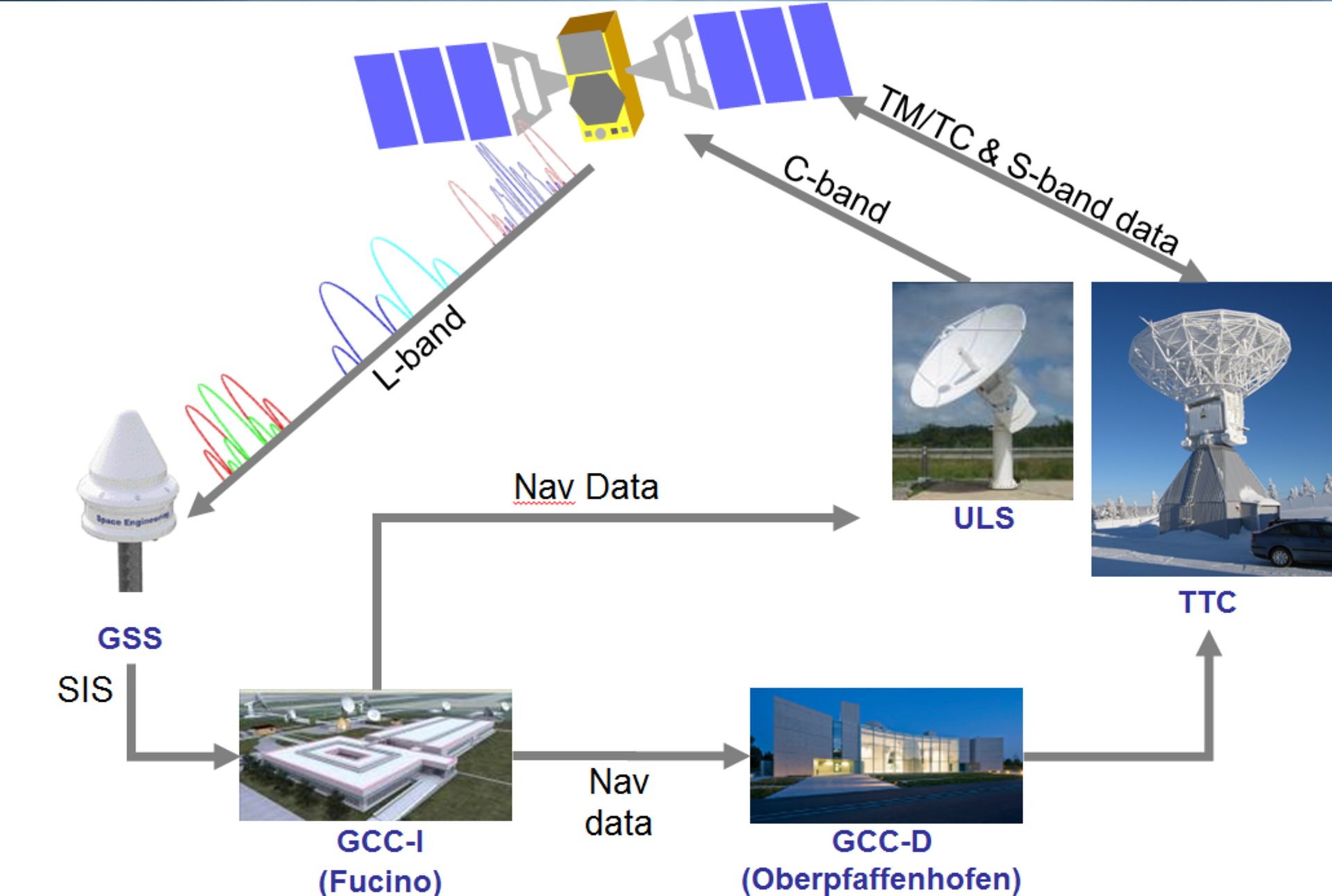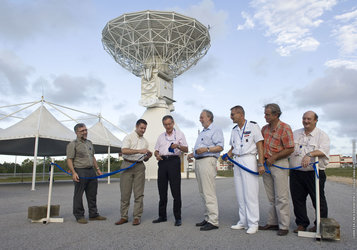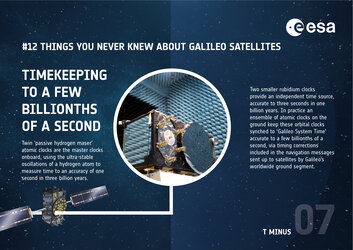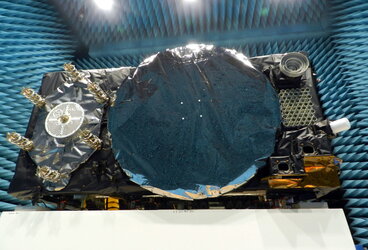

Galileo ground segment
There is lot more to Galileo than just its satellites in space. A global ground network is essential to ensure the continued reliability of the time and positioning information embedded within the signals from orbit. Information on the satellites’ clock performance and positions is gathered so that a correcting message can be uplinked to the satellites for rebroadcast to users in the satellite signals themselves. Closing the loop in this way means that optimal performance can be maintained over time. The quality and reliability of each individual Galileo signal is also checked.
Galileo Sensor Stations (GSSs) pick up Galileo signals in space (SIS) to perform clock synchronisation and orbit measurements which are fed back to the twin Galileo Control Centres to serve as the basis of the navigation message incorporating clock and position corrections and associated integrity data. Uplink Stations (ULSs) then uplink this navigation message to the Galileo satellite navigation payloads for rebroadcast to users. Telemetry, Tracking and Command Stations (TT&Cs) provide the link between the Control Centres and the satellite platforms.





